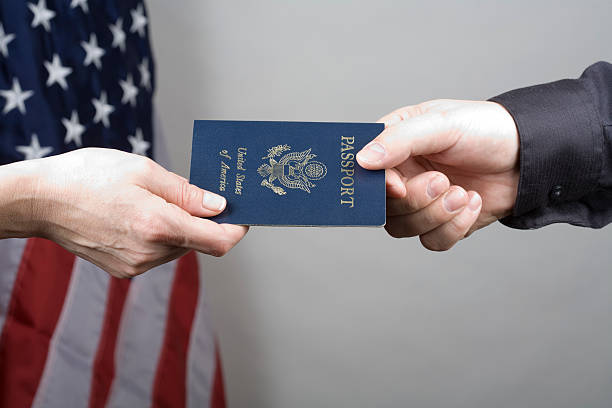The Immigration and Nationality Act (INA): A Pillar of the U.S. Immigration System
The Immigration and Nationality Act (INA) is the legislative framework that consolidates all regulations governing immigration in the United States. Through this law, both the entry of foreign nationals into the country and the temporary stays of «non-immigrants» are managed. Non-immigrants are individuals who visit the country for reasons such as tourism, study, or work, without the intention of permanently settling. The INA also sets the criteria for immigrants to be accepted as permanent residents and for those seeking naturalization to become U.S. citizens.

Origin of the INA
The INA was enacted in 1952 as an effort by the U.S. government to organize and consolidate the various immigration regulations that existed at the time. Before its creation, the U.S. immigration system was fragmented into numerous individual laws that often caused confusion and a lack of coherence in their application. By bringing all the provisions under one legal framework, the INA facilitated the implementation and understanding of the regulations related to immigration.
Since its inception, the law has been amended and updated multiple times to adapt to social, economic, and political changes both in the United States and globally. These modifications allow the law to continue fulfilling its goal of effectively regulating immigration, maximizing benefits for the country, and ensuring border protection and national security.

What Does the INA Regulate?
The Immigration and Nationality Act covers a broad range of topics related to immigration, regulating several key aspects of entry, stay, and the rights of immigrants in the United States. Some of the key areas the law governs include:
- Immigrant visas: The INA sets forth the criteria and procedures for foreign nationals to apply for visas that allow them to enter the United States with the intention of becoming permanent residents.
- Change of immigration status: It provides a legal framework for non-immigrants (those who enter the country temporarily) to change their status to an immigrant under certain circumstances.
- Admission of refugees: The law regulates the admission of refugees, defining who qualifies and under what conditions they may be admitted to the country.
- Asylum applications: The INA also addresses the rules for individuals persecuted in their home countries to seek asylum in the United States.
- Adjustment of status: This is the process by which an individual already in the United States can apply to become a permanent resident.
- Permanent residence and naturalization: It establishes the requirements for immigrants to obtain a «green card» and eventually become U.S. citizens.
- Petitions for spouses and children: The INA governs the procedures for U.S. citizens and permanent residents to petition for family reunification.
- Visa Waiver Program: Defines the conditions under which certain countries may have citizens enter the United States without the need for a visa.
- Reentry permits: Covers the regulations allowing permanent residents to leave the country and return without losing their legal status.
- Detentions of foreign nationals: Establishes the rules for the detention of immigrants who violate immigration laws.
- Temporary Protected Status (TPS): Defines the criteria for granting temporary protection to individuals from countries affected by conflict or natural disasters.
- Revocation of petitions and naturalization: Regulates situations where an immigration petition or citizenship may be revoked.
Processes and Requirements Based on the Applicant’s Situation
The process of obtaining a visa or legal status in the United States varies greatly depending on the personal circumstances of the applicant. Some of the most common pathways include:
- Family reunification: The INA facilitates U.S. citizens and permanent residents in petitioning for the entry of their close family members, such as spouses, children, or parents.
- Work permits: Foreign nationals who have a job offer or special skills may also apply for visas to work in the country.
- Capital investment: The law provides options for foreign investors to obtain permanent residence by making significant investments in the U.S. economy.
- Refugees and asylum seekers: Individuals fleeing persecution in their home countries can seek protection under the INA’s provisions.
- Diversity visas or «visa lottery»: This program grants a limited number of visas each year to individuals from countries with low immigration rates to the United States.
These various pathways for obtaining visas reflect the INA’s comprehensive approach, aiming to address both the economic needs of the United States and its humanitarian and social obligations.

Creation and Evolution of Immigration Laws
The United States Congress holds exclusive power to create and modify immigration laws. This means that all decisions related to immigration policy, from creating new visa types to modifying existing programs, are proposed and debated in Congress before becoming law. Public immigration laws are federal, meaning they apply nationwide and are not subject to state variations.
Over the years, the INA has undergone numerous adjustments. These modifications generally do not alter the law in its entirety but focus on adding new provisions or revising specific sections to improve the efficiency of the immigration system or adapt it to the country’s current needs.
Simplifying the Immigration Process
Despite the complexity of the law itself, immigration procedures are organized in a way that allows applicants to follow simplified steps. Immigration forms usually provide clear instructions regarding the necessary documents and requirements for each type of application, such as permanent residence, naturalization, or work visas.
Moreover, the role of an immigration attorney can be crucial in navigating this process. A specialized attorney can guide applicants, ensure that forms are properly submitted, and provide advice on the best strategy to follow, depending on the individual’s circumstances.
Enforcement of Immigration Laws
The Department of Homeland Security (DHS), created following the passage of the Homeland Security Act in 2002, is the primary agency responsible for enforcing immigration laws. Several key agencies operate under the DHS umbrella:
U.S. Citizenship and Immigration Services (USCIS): Manages administrative functions related to immigration, such as issuing visas, permanent residence, naturalization, and family petitions.
Customs and Border Protection (CBP): Is responsible for monitoring and protecting the country’s borders and entry points, both at airports and seaports.
Immigration and Customs Enforcement (ICE): Locates and detains individuals who pose a threat to national security or have violated immigration laws.
The United States: A Nation of Immigrants
Historically, the United States has been a key destination for immigrants from around the world. From its inception, the country has benefited from the diversity and talent of people who have arrived in search of better opportunities. Family reunification has been one of the fundamental pillars of its immigration policy, allowing millions of families to settle and contribute to the economic and social development of the country.
However, irregular immigration presents significant challenges. Individuals residing in the country without proper documentation are at risk of deportation, particularly if they violate immigration laws or commit serious crimes.

Rights and Legal Protections
For those facing challenges in their immigration process or who feel their rights are not being respected, there are legal mechanisms in place to protect them. An immigration attorney can help individuals understand the laws and regulations applicable to their case, providing support in the administrative process or in situations requiring legal defense before an immigration judge. Additionally, there are laws in place to protect immigrants from abuse and discrimination, ensuring that fundamental human rights are respected.
 Employeer and business Information about Employeers, plataforms and works
Employeer and business Information about Employeers, plataforms and works 



